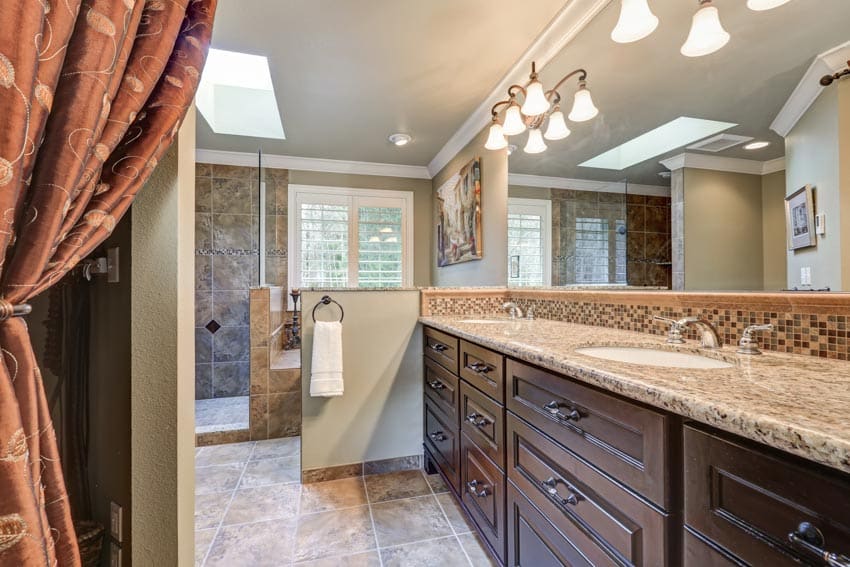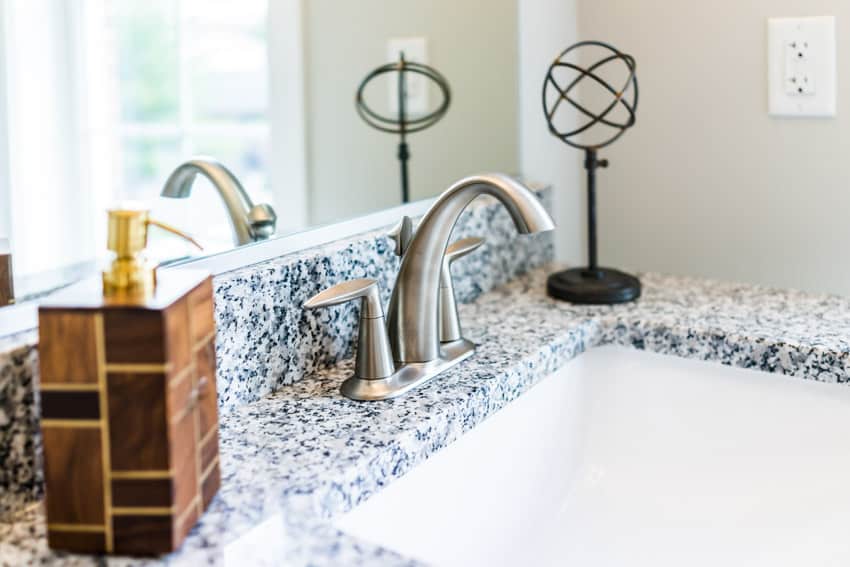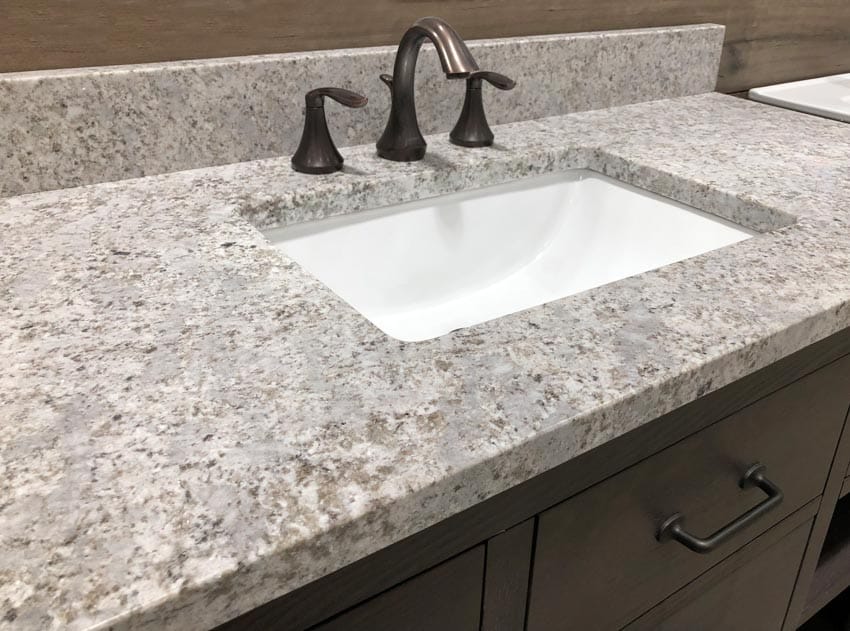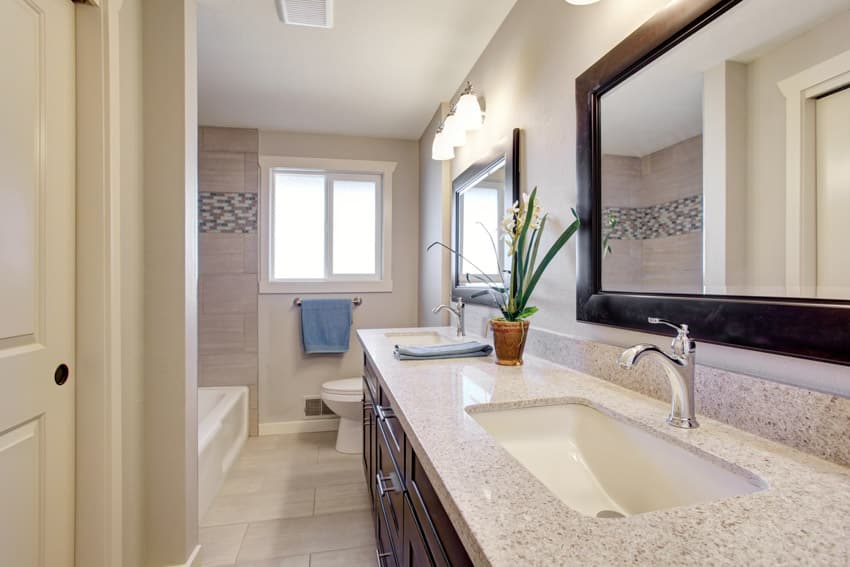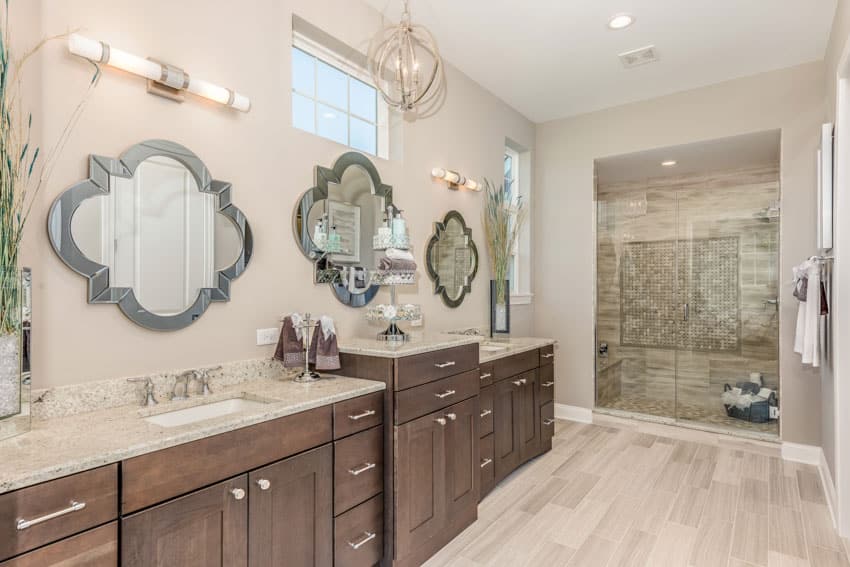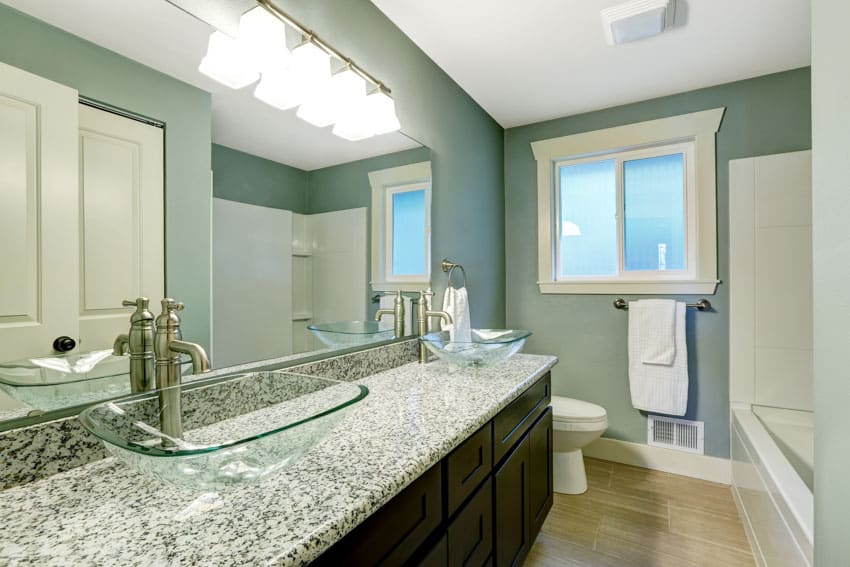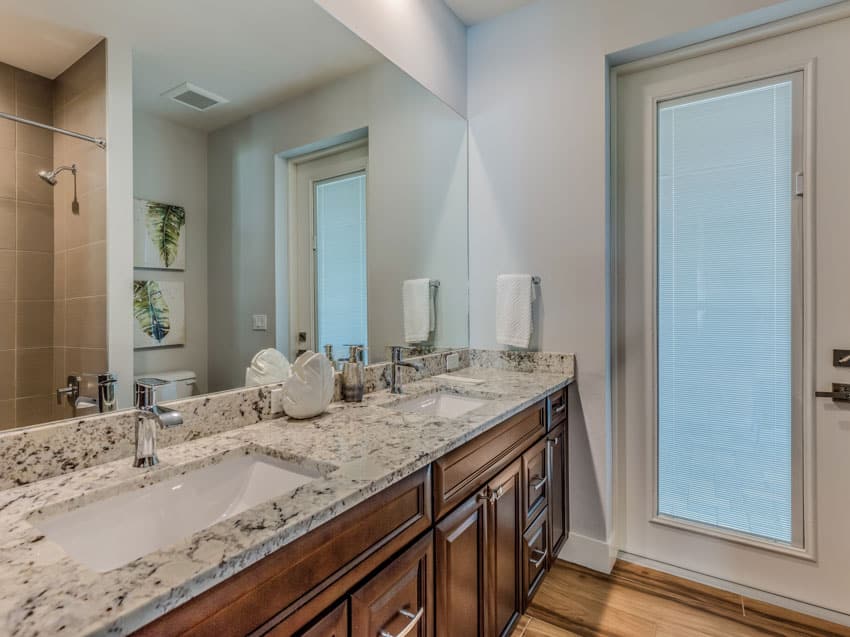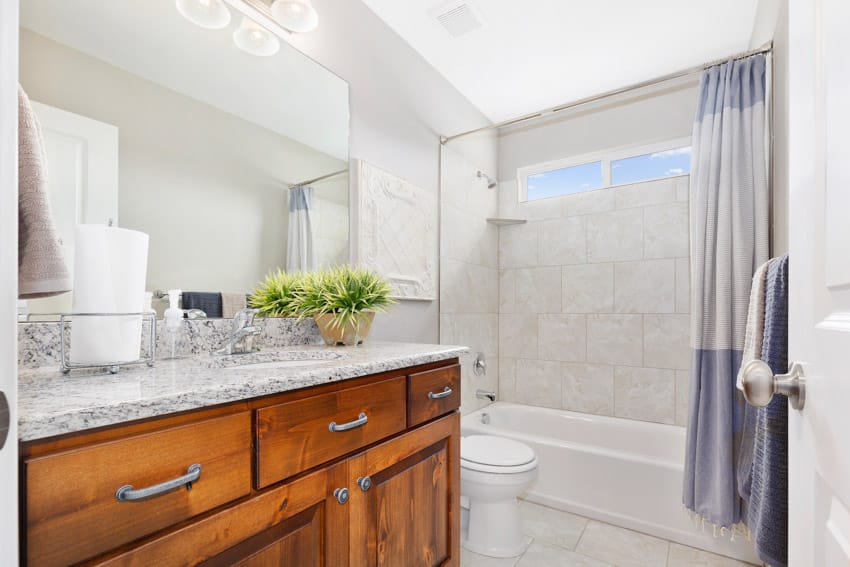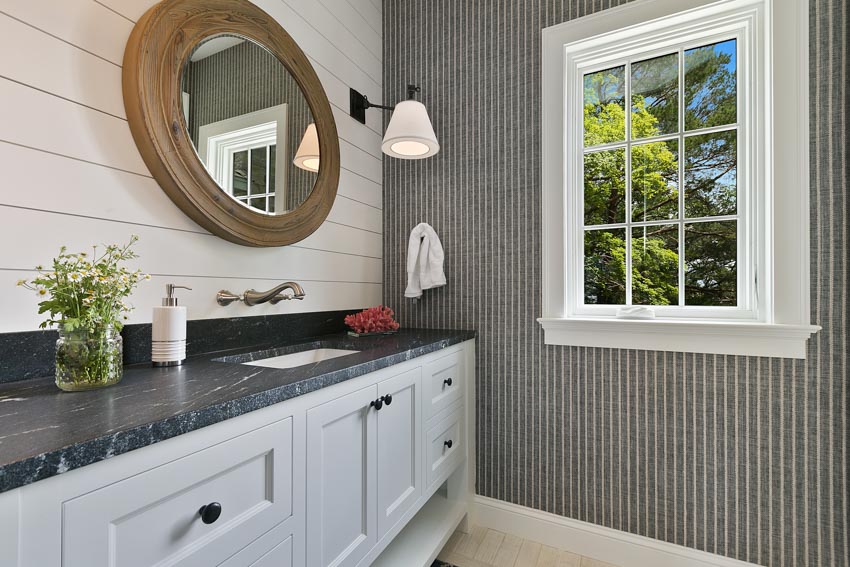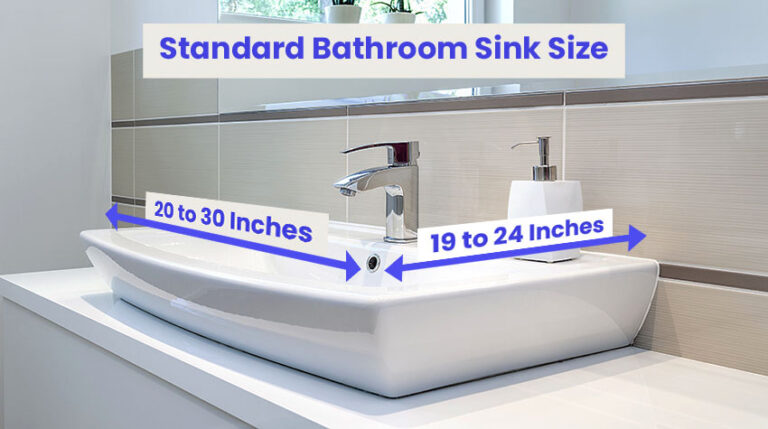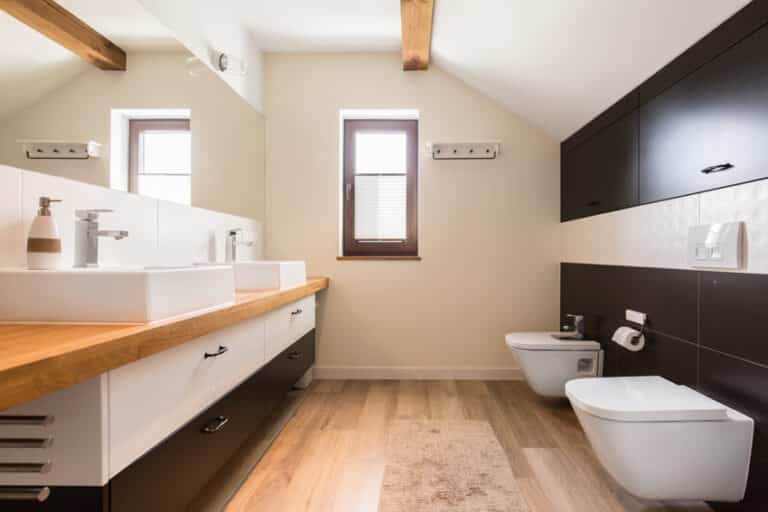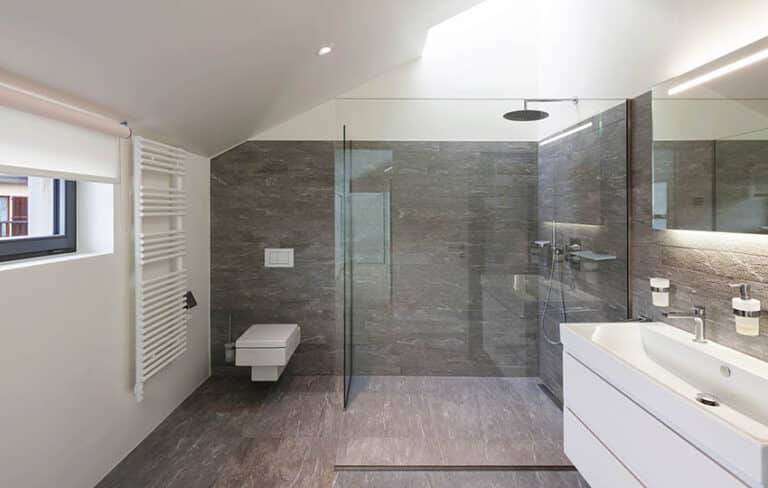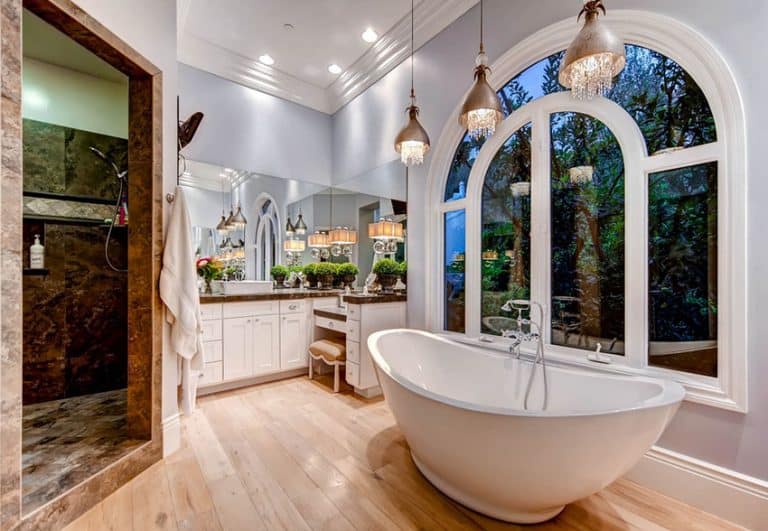What Are The Best Granite Color Bathroom Countertops To Use?
When it comes to countertops, granite has been a long-standing favorite, mainly due to its versatility, superior hardness, and overall durability that could last for decades and even a lifetime. This natural stone is as strong as it is stunning, and for granite bathroom countertops, expect to enjoy the organic beauty even with your most contemporary tendencies.

But, like any other countertop material, there are pros and cons that every homeowner should know before investing in this natural stone. Here are the advantages and drawbacks of granite bathroom countertops.
Granite Colors for Countertops in the Bathroom
Granite comes in a variety of color tones, including ivory, pink, yellow, gray, beige, and black, due to its composition, which includes feldspar and quartz.
Here are some of the most popular granite colors to consider:
1. White: Colonial White and Cotton White. If you have dark vanities or cabinets, granite with white surround with minimal light to dark specks is a great option because of the contrasting effect. White as a base color also provides a clean look in your bathroom while it brightens up your bathroom interior.
• Colonial White Granite has brown and rose-colored flakes and has a lovely off-white color. It is a highly prized natural stone from northwest India. The neutral color scheme of natural stone is ideal for both traditional and contemporary homes.
• Cotton White Granite is predominantly white with gray and black accents. It has a uniform pattern with slight variations in color and finish.
2. Blue: A gorgeous tinge of blue can bring a relaxing, youthful vibe to any bathroom. Blue granite is striking, and you’ll find it not that hard to jive it with your modern or contemporary bathroom design.
• The Blue Bahia is rare and can cost more than your average granite, but it a worth it. It adds to your bathroom with its stunning blue veining with white and gold combinations.
• The Blue Pearl boasts spectacular navy-blue tones with dark gray and white subtleties. With a closer look at this natural stone, you’ll find varying shapes and sizes of mineral deposits with specks of a wide range of colors, primarily brown, gray, and black shades.
There are also large quantities of reflective minerals, and when polished, these colors add a sparkling sheen to your bathroom counter.
3. Black: Black adds a bold and dramatic touch to any bathroom counter, and when combined with layered lighting, you get an elegant personal space.
Plus, it is a practical color, too, as it doesn’t show dirt or stain easily. There are also black bathroom countertops with flecks of gold or white veins that are truly striking.
• Black Galaxy, as the name implies, is like staring at the night sky with its jet-black color and specks of white like distant stars. The varying mineral sizes with a hint of gold or green give it more depth or a dimensional character.
• Black Marinace is a one-of-a-kind and eye-catching type of natural stone that makes a bold statement. Thousands of petrified and white, grey, and black stones in various sizes and shapes cover a slab of Black Marinace.
This black stone was likely formed when a glacier tumbled the stones smoothly before cementing them into the black matrix. It was quarried in Brazil. Marinace in black looks great with white or creamy countertops.
Types of Granite Bathroom Countertops
India and Brazil are the two biggest exporters of granite, with level 3+ high grades being the most common. While India is the world’s leading exporter of rough granite blocks, Brazil is the world’s top exporter of slabs.
Bianco Antico Granite – Brazil
Bianco Antico is a granite color that you’ll see all over the internet when looking for the best color. It makes sense because this color can help you achieve the minimalist look you want in your bathroom.
It’s made of Brazilian white granite. It appears white and grey from a distance, but if you get close enough and concentrate on the details, you’ll notice traces of pink and brown.
Imperial White Granite – India
Imperial white granite is a beautiful stone that is mined in India. As the name implies, it has a cool-toned white surface. The stone’s surface is littered with tiny blue-gray crystals, creating a lovely grainy pattern that adds a new dimension to your bathroom countertop, while the hint of a pink undertone adds a modern twist.
This slab would work well as the foundation for almost any design. Its subdued color complements both bold looks and a more delicate interior.
Cultured Granite Countertops
A cultured granite bathroom countertop is a great alternative to natural granite. It is engineered to look like natural stone without the expensive price tag and is non-porous, meaning virtually no staining. It’s customizable, so you can have any color or design you want.
The downside, though, with cultured bathroom countertops is that the surface is not scratch-resistant, so expect some dents and scratches throughout its service life.
Pros and Cons of Granite Counters For The Bathroom
Here, we share the advantages and disadvantages of using this material for bathroom countertops.
Pros
1. Superior Hardness: Won’t Crack or Dent Easily. Mohs scale lists this material as 6-7, which means it is a very hard material due to the tight mineral grains formed over a long time as it cooled down.
In addition, these bathroom countertops are made up of quartz and feldspar, which are harder than steel. The hardwearing surface won’t easily crack or dent with regular to frequent use.
2. Naturally Resistant to Bacteria: According to the CDC, there is no granite harboring bacteria or cases of people becoming ill due to bacteria from this natural stone, making the natural stone suitable as a food and medical grade surface.
But while it is naturally resistant to bacteria, there’s still a need to regularly clean your bathroom countertops to prevent other microbes from forming from stagnant water or accumulated debris. It is also recommended to learn how to seal granite countertops for bathrooms.
3. Easy Maintenance: Since this material is installed with one continuous slab, there are minimal to no seams needed, depending on your design. The seams or crevices in tiled bathroom countertops are filled with caulking where soap grime.
Accumulated debris can usually get lodged and harden over time. Discoloration of your caulking can occur and be chipped off by a substandard caulking solution or installation.
4. Resistant to Chemical Damage: The hardwearing surface is not sensitive to most acids and bases, which means you won’t be too concerned about placing your makeup or toiletries on your natural stone bathroom countertop.
Moreover, it can take most cleaning agents and won’t damage the surface easily. However, still, be wary of the repeated use of strong chemicals as they wash away your sealer over time.
5. Versatility and Availability: This material is the most naturally found plutonic rock found in mountain ranges and continental shields. They won’t run out too soon; this availability makes them more affordable than most natural stones.
However, the price range for your bathroom countertop will be affected by many factors, such as the rarity of the design, thickness, and required finish. The slabs come in a wide range of colors, veining, and patterns due to their nature as natural stones.
These differences can be found from one slab to the next and certainly from one shipment to the next. It comes in a variety of color tones and patterns, and each variety can have dramatic differences in color and pattern.
6. Wide Price Range: While this material is considered a luxury material, its wide price range due to its myriad designs and availability makes it a great investment for midrange projects. It is generally more affordable than marble and a practical choice for countertops.
7. A Possible DIY Project: This material is tough and difficult to cut. Nonetheless, you don’t have to be a stonemason to do so. You can make clean and precise cuts with a circular saw and a diamond-cut blade. Cutting it can be a safe and enjoyable DIY project if you take the necessary precautions.
8. Unique Natural Appearance: While engineered stone can give you consistent colors and veining, nothing beats the organic look of natural stone. One of the reasons why this material remains a popular choice for countertops is the unique aesthetic appeal and where no two stones are alike.
9. A Sensible Investment: This material is a sensible investment to enjoy your bathroom countertops without the constant worry of damage and dedication to care.
These bathroom countertops can last 100 years or even more with quality materials, the right installation, and standard maintenance. Homes with natural stone installation always sell better with an increased value.
Cons
1. Will Stain: Similar to any natural material, expect surfaces to stain when not properly sealed, so the key is sealing the bathroom countertop to protect it from nasty stains.
If you want to capture the authentic look and drama of stone, you’ll need to deal with the resealing requirements of this kind of natural stone.
In general, resealing annually for a busy countertop is recommended, but as commercial sealants improve over time, you might find this interval goes longer than your yearly resealing time.
Choosing a polished finish for your bathroom countertops is another way to keep them from staining. Compared to honed granite countertops, a polished finish seals most of the pores on the stone’s surface. Polished style lessens the pores than other finishes, making it more resistant to moisture.
2. Massive and Heavy: These countertops are heavy, especially from a single slab. Transportation costs can be high, mainly if no quarries for this material are close.
In addition, getting the material into position can be challenging once it has arrived on site. A slab countertop can have a lot of trouble, even with a simple staircase. A sturdy floor must support the countertop and the cabinet on which it is mounted.
3. An Outdated Look: While it is readily available to almost every material supplier with a wide range of colors, the salt and pepper look may not be for everyone.
As minimalist designs take over the interiors, the clean, sleek look is fast becoming the norm for homeowners, and the speckled look may not be the appealing choice today.
However, some suppliers offer slabs with minimal specks, and white granite is abundant, which can be easily matched with a modern interior.
How Do You Choose Granite for a Bathroom?
• Understand the Different Tile Grades: A, B, C, D, E, and F are common names for granite boxes. You may notice that Grade’ A’ slabs are less expensive, and as the grade progresses to ‘F,’ the price rises.
It’s natural to believe that grade ‘A’ is of lower quality, whereas grade ‘F’, which is the most expensive, is of the highest.
However, it is critical to understand that the grades are determined solely by price and have no bearing on their functional quality.
The grading is done for the sellers’ and storekeepers’ convenience. So, if you prefer the color and pattern of the lower-grade one, choose it.
• Ask Questions and Know Your Natural Stone: Selecting a beautiful piece is great, but you also need to learn about the stone’s inherent characteristics.
Surface pitting, fissures, veins, color concentrations, inclusions, and shade variation will all influence the class of this kind of material.
• Consider the Lighting Design: A lighter color tone or speckled variety is an excellent choice for darker spaces with little to no natural light.
A darker color, such as Black Marinace, deep obsidian, and sable variety with white streaks, would be a good choice because it’s among the best bathroom countertops with a lot of natural light or if you’re a busy parent who doesn’t want dirt to show. Because darker varieties combined with insufficient light can make spaces appear smaller, lighting is important to consider.
• Consider Existing Materials: Take a sample of your materials when shopping for a counter unless you plan to work around your natural stone slab. It’s simple enough to unscrew a cabinet door or take a paint sample, but if nothing else, take a lot of photos in natural light to help you choose the right color.
• Consider the Dimensions: When you see a slab with flowing veins in a tile shop, it may appear to be very aesthetically pleasing, but it may not be what you get on your existing countertop mount.
The slabs will almost certainly be cut to fit, and the vein flow may be disrupted. So, before you make your final decision, talk to your stone fabricator about the size and shape of your countertops.
How Much Does Granite Cost
According to cost data research, homeowners pay between $2,000 and $4,500 for countertops, with $3,250 being the average, including material and installation.
Materials cost between $40 and $60 per square foot, with exotic slabs costing even more, and installation costs between $35 and $85 per hour.
How To Seal Granite
It’s simple to learn how to seal granite, and you can do it without any prior experience. Apply a stone-safe sealer directly to the counter in three-foot sections and buff it in with a clean, dry cloth immediately.
To avoid hazing, keep buffing the surface until it’s completely dry. Regular sealing is not harmful because it protects against bacteria, stains, watermarks, and acid damage, and it is impossible to over-seal this material.
How To Clean Granite Surfaces In A Bathroom
Here are the materials you’ll need to clean natural stone bathroom countertops and other important tips you should know.
Things you need:
• Water
• Dish Detergent
• Microfiber cloths
• Baking Soda
• Hydrogen Peroxide
• Plastic Wrapper
• Tape
Regular Cleaning: For regular cleaning, use a solution of warm water and mild detergent, followed by a microfiber towel to polish the stone. Abrasive or acidic cleaners can strip the sealer and etch the stone, so avoid them. Read more about cleaning granite countertops here.
Stain Removal: Clean stains on natural stone countertops using a solution of baking soda and water paste (for oil-based staining); or hydrogen peroxide (for water-based staining) (for water-based staining).
Then, cover the stain with the paste, wrap it in plastic wrap, and tape down the edges. Allow sitting for a few days (or at the very least overnight) before rinsing off the paste.
If the stain isn’t completely gone, repeat the procedure. Make a spot test first to ensure that the method won’t change the stone’s color or finish.
Sealing: These surfaces are popular because of their rock-solid durability, but they need to be resealed regularly to keep them stain-free. It is recommended to seal annually.
Is Quartz or Granite Better As Countertops?
While this material remains one of the top choices for countertops, improved manufacturing techniques have placed engineered stones, such as quartz, as a worthy contender.
As it is bent on toppling down one of the most enduring countertop materials, the quartz now boasts the same durability coupled with the much sought clean, minimalistic look.
On the other hand, using this material for bathroom countertops has a one-of-a-kind look and is easier to refurbish in the future. It may be more expensive, but it will be well worth the investment. So, it really boils down to your preference, but both work well as bathroom countertops.
See more related content about programs to use for renovations and remodeling in our article about bathroom design software.




